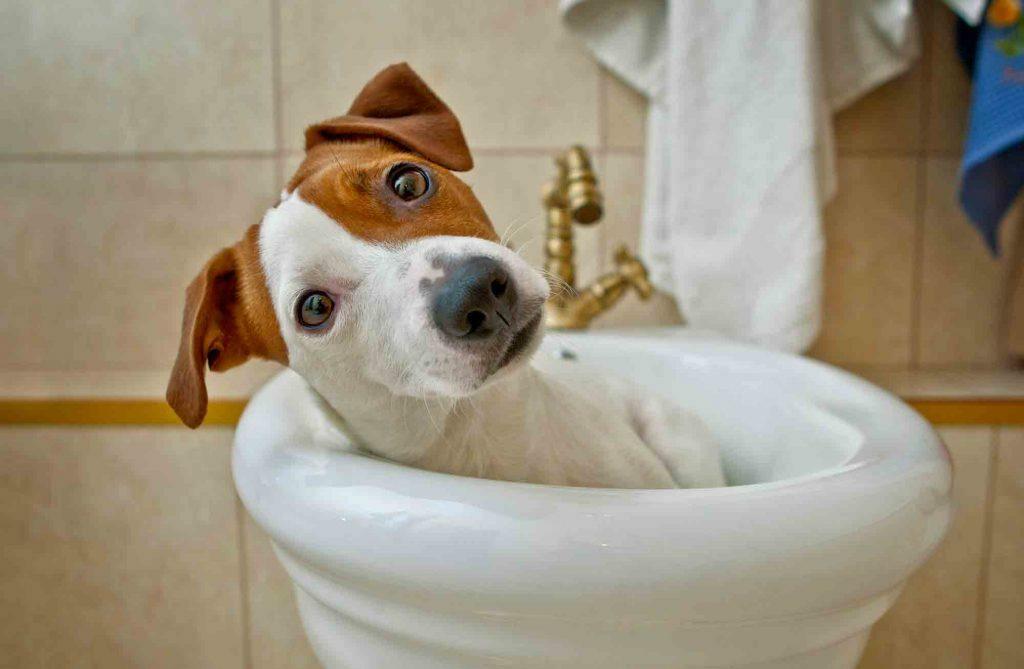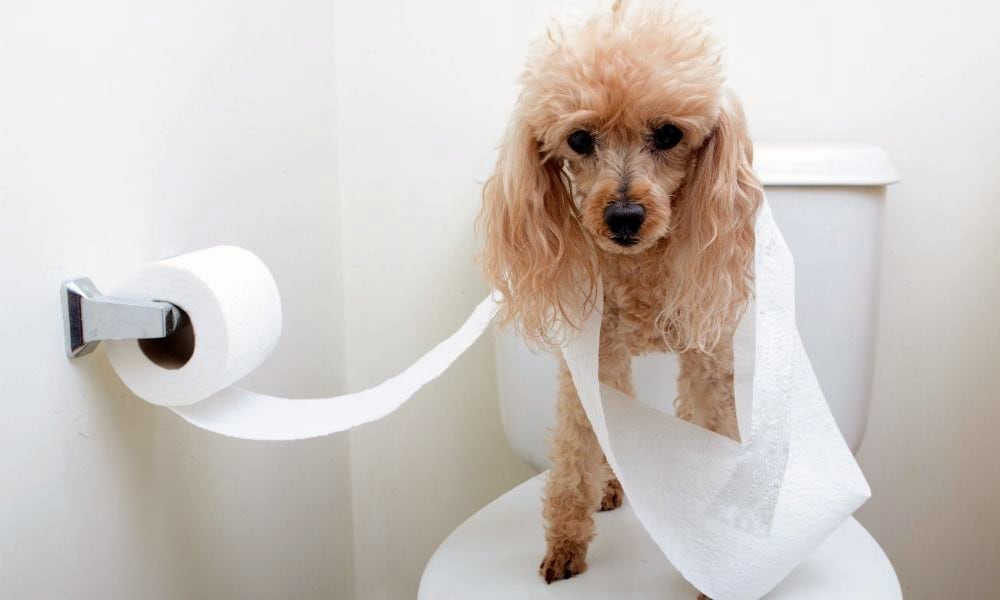Significant Reasons Why Animal Waste Needs to Never Be Flushed Down the Toilet
Significant Reasons Why Animal Waste Needs to Never Be Flushed Down the Toilet
Blog Article
The article author is making a few great pointers relating to Can You Flush Dog and Cat Poo Down the Toilet? overall in this content down below.

When it concerns disposing of waste, particularly animal waste, lots of people commonly turn to the hassle-free option of flushing it down the toilet. Nonetheless, this seemingly very easy service can have significant effects for the environment and public health. In this article, we'll check out why flushing animal waste down the toilet is a negative concept and offer alternative techniques for appropriate disposal.
Intro
Correct waste disposal is essential for maintaining ecological sustainability and public health. While it might appear safe to flush animal waste down the toilet, it can lead to different issues, both for the environment and human wellness.
Threats of flushing pet waste
Ecological effect
Flushing animal waste presents damaging bacteria and virus right into waterways, which can adversely impact marine ecosystems. These pathogens can infect water sources and damage marine life, interfering with delicate ecological communities.
Public health issues
Animal waste includes hazardous germs such as E. coli and Salmonella, which can pose serious health and wellness threats to humans. Flushing animal waste down the bathroom can contaminate water supplies, causing the spread of illness and infections.
Alternatives to flushing
As opposed to purging animal waste down the bathroom, there are numerous different disposal techniques that are a lot more eco-friendly and hygienic.
Composting
Composting animal waste is an environmentally friendly method to deal with it. By composting, raw material is broken down right into nutrient-rich soil, which can be used to fertilize yards and plants.
Garbage dump disposal
Throwing away animal waste in a landfill is an additional alternative. While not as eco-friendly as composting, it is a more secure choice to flushing, as it stops the contamination of water sources.
Pet dog garbage disposal systems
There are customized family pet garbage disposal systems available that safely and hygienically take care of pet waste. These systems typically utilize enzymes to break down waste and eliminate odors.
Actions to correct pet garbage disposal
To ensure proper disposal of animal waste, follow these steps:
Scooping and landing waste
Consistently scoop and bag animal waste using eco-friendly bags. This stops waste from polluting the environment.
Utilizing designated waste containers
Dispose of bagged pet waste in designated waste containers, such as garden compost bins or garbage dump containers. Avoid flushing it down the commode in all prices.
Cleaning litter boxes and pet locations on a regular basis
Consistently clean can and animal locations to prevent the accumulation of waste and germs. Usage pet-safe cleansing products to keep hygiene.
Benefits of appropriate disposal methods
Taking on appropriate disposal methods for animal waste uses a number of advantages:
Minimized environmental pollution
Appropriate disposal techniques lower the threat of environmental pollution, safeguarding rivers and ecosystems from contamination
Lessened danger of water contamination.
By avoiding flushing pet waste down the bathroom, the threat of water contamination is considerably decreased, protecting public health.
Enhanced cleanliness and hygiene
Correct disposal techniques promote far better hygiene and hygiene, developing a more secure environment for both people and pets.
Conclusion
Finally, purging pet waste down the commode is hazardous to the setting and public health. By taking on alternative disposal methods and complying with appropriate waste management techniques, we can lessen the unfavorable impact of animal waste and contribute to a cleaner, much healthier earth.
What To Do With Dog Poo – The Do's And Don'ts Of Disposing Of Faeces
Dog poo bins
Some councils provide dedicated dog waste bins in popular dog-walking areas that can take dog poo that has been bagged but you can legally dispose of dog waste in any public litter bin, as long as it is securely bagged. This also applies to your wheelie bin at home.
Do not flush
Water companies do not recommend flushing dog faeces down the toilet because certain parasites can survive the water processing treatment and are potentially harmful to humans. You should also never consider flushing dog poo that has been bagged down the toilet as the bags will not break down and instead create severe blockages in the sewage system.
In the woods
The Forestry Commission promotes a ‘stick and flick’ method for dealing with waste in the woods. This means finding a stick and using it to flick any poo from off the path so that it is out of the way of other walkers. You could also bury it as long as it is not in an area where there might be livestock.
Livestock
Parasites found in dog poo can be transmitted to livestock if they inadvertently eat infected faeces that has been left on grazing land. This could result in the death of sheep or abortion in cattle so you should always make sure you pick up your dog’s waste in fields where livestock could be present.

Consistently clean can and animal locations to prevent the accumulation of waste and germs. Usage pet-safe cleansing products to keep hygiene.
Benefits of appropriate disposal methods
Taking on appropriate disposal methods for animal waste uses a number of advantages:
Minimized environmental pollution
Appropriate disposal techniques lower the threat of environmental pollution, safeguarding rivers and ecosystems from contamination
Lessened danger of water contamination.
By avoiding flushing pet waste down the bathroom, the threat of water contamination is considerably decreased, protecting public health.
Enhanced cleanliness and hygiene
Correct disposal techniques promote far better hygiene and hygiene, developing a more secure environment for both people and pets.
Conclusion
Finally, purging pet waste down the commode is hazardous to the setting and public health. By taking on alternative disposal methods and complying with appropriate waste management techniques, we can lessen the unfavorable impact of animal waste and contribute to a cleaner, much healthier earth.
What To Do With Dog Poo – The Do's And Don'ts Of Disposing Of Faeces
Dog poo bins
Some councils provide dedicated dog waste bins in popular dog-walking areas that can take dog poo that has been bagged but you can legally dispose of dog waste in any public litter bin, as long as it is securely bagged. This also applies to your wheelie bin at home.
Do not flush
Water companies do not recommend flushing dog faeces down the toilet because certain parasites can survive the water processing treatment and are potentially harmful to humans. You should also never consider flushing dog poo that has been bagged down the toilet as the bags will not break down and instead create severe blockages in the sewage system.
In the woods
The Forestry Commission promotes a ‘stick and flick’ method for dealing with waste in the woods. This means finding a stick and using it to flick any poo from off the path so that it is out of the way of other walkers. You could also bury it as long as it is not in an area where there might be livestock.
Livestock
Parasites found in dog poo can be transmitted to livestock if they inadvertently eat infected faeces that has been left on grazing land. This could result in the death of sheep or abortion in cattle so you should always make sure you pick up your dog’s waste in fields where livestock could be present.

I was made aware of that editorial about 10 Things You Should Never Flush Down The Toilet through an associate on our other website. In case you appreciated our blog entry if you please be sure to share it. I praise you for being here. Return soon.
Additional Resources Report this page